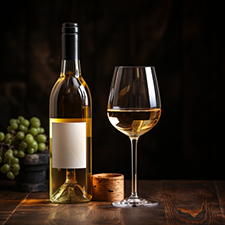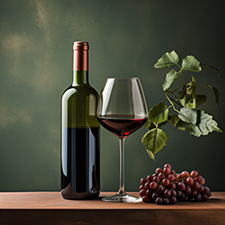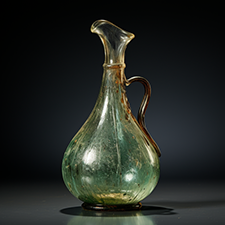Why Do Red and White Wines Have Different Bottles?
Posted by Matteo Lahm on 11th Nov 2024
You've probably pondered over the question: why are white wines stored in clear bottles and reds in tinted ones? Is it just a matter of aesthetics, or is there a functional reason behind it? Let's uncork this mystery together.
The tradition dates to the 17th and 18th centuries, primarily in Europe. During this era, glass was indeed a luxury, and its color was indeed a status symbol. However, the choice of bottle color was also influenced by the technological limitations and regional resources of the time.

The art of glassmaking was a highly skilled craft, and clear glass was particularly challenging to produce. It required a high degree of purity in the raw materials and precise control over the firing process. This made clear glass more expensive and thus a symbol of prestige. It was in regions like France and Italy, where glassmaking was a well-established craft, that clear bottles were first used for the presentation of more delicate and prestigious white wines.
Red wines, on the other hand, were often stored in green or brown tinted bottles. The reason for this was twofold. Firstly, these bottles were cheaper and easier to produce. The green or brown tint was a result of impurities in the sand used to make the glass. Secondly, these regions, particularly those in Northern Europe like Germany and the Netherlands, had a long tradition of beer brewing. Beer was typically stored in green or brown bottles to protect it from light, and this practice was carried over to wine.
So, the tradition of using different colored bottles for white and red wine originated from a combination of technological limitations, regional resources, and cultural practices. Over time, these traditions have been maintained and even reinforced by scientific understanding and marketing strategies, making them an integral part of the wine industry today.

But the story doesn't end there. The choice of bottle color also serves a functional purpose. You see, wine is a bit like a vampire – it hates sunlight. More specifically, it despises UV light, which can degrade and prematurely age the wine. This is where the tinted bottles for red wines come into play. The darker glass helps to filter out harmful UV rays, protecting the wine and allowing it to age gracefully.
White wines, on the other hand, are typically consumed younger and are less affected by light exposure. Therefore, they can afford to be stored in clear bottles. However, if you're planning to age your white wine, it might be a good idea to consider a tinted bottle or at least store it in a dark, cool place.
The evolution of wine bottling is a fascinating journey that intertwines with significant historical events. The Romans were among the first to use glass bottles for wine, but these were small, onion-shaped vessels, not the sleek bottles we're familiar with today. It wasn't until the 17th century, with the invention of the coal-burning furnace, that larger, stronger bottles became feasible.

The Industrial Revolution in the 19th century brought about significant advancements in glass production, making it cheaper and more accessible. This led to the standardization of wine bottles, with the clear and tinted versions we know today.
In the 20th century, the advent of scientific research shed light (pun intended) on the effects of UV light on wine, reinforcing the use of tinted bottles for red wines. Meanwhile, the rise of New World wines, particularly from Australia and California, saw a shift towards clear bottles for white wines, emphasizing their freshness and vibrancy. So, the traditions of centuries past were not absent of intuition.
So, there you have it, your wine bottling conundrum, uncorked and poured out for your understanding. Whether you're bottling a robust red or a zesty white, remember that the choice of bottle is not just about aesthetics, but also about preserving the quality of your wine. So, choose wisely, dear winemaker, and may your wine always be as delightful as the first sip.

